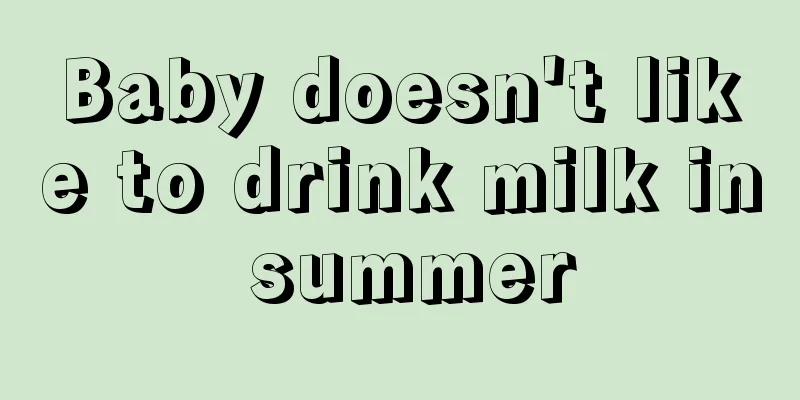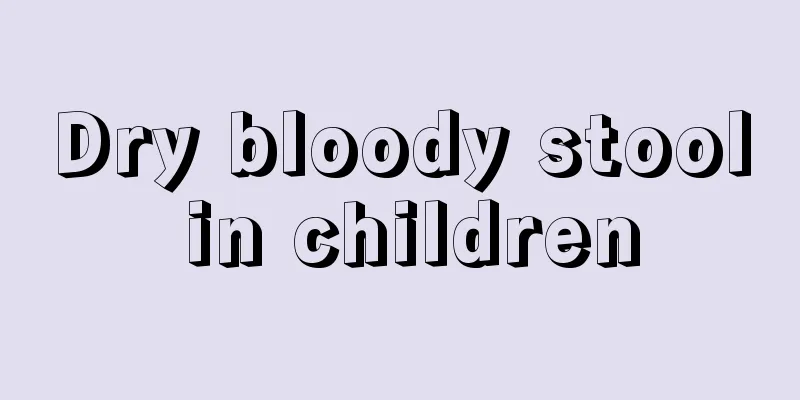Seven month old baby's feet peeling

|
When a baby is born, his skin is wrinkled. As the baby absorbs nutrients, he will slowly grow. Some babies will experience skin peeling in the first few days after birth. This is very normal and parents do not need to worry too much. Some parents find that their seven-month-old baby's soles are peeling. What is going on? Here are some reasons for the peeling of the soles of babies' feet. You can take a look. 1. What causes baby's feet to peel? 1. Physiological peeling If the baby has mild peeling without inflammation, and no pain or itching, this situation can be said to be normal. It is called "physiological desquamation" and is caused by the child's rapid metabolism. Generally, no special treatment is required. It has obvious seasonality, often occurring in spring and autumn. For most children, it will stop after a period of time, but for some children, it may last relatively longer, from a few weeks to one or two months. You can apply body lotion to your child after bathing every day to help relieve the symptoms. 2. Lack of Vitamin A Peeling of children's feet may also be caused by a lack of vitamin A in their bodies. Vitamin A is a fat-soluble vitamin that protects the surface of the skin. If it is deficient, it will cause dryness and peeling of the skin. It is recommended to eat more foods rich in vitamin A, such as animal liver, egg yolk, milk, cheese, fish, shellfish, carrots, etc. If the deficiency is severe, you can use vitamin tablets to supplement it under the guidance of a doctor. 3. Fungal infection If your baby's feet are infected with fungi, peeling may occur easily. Common symptoms include peeling, unbearable itching, erythema, etc., which recur frequently and may be contagious and can be transmitted to others through towels, handkerchiefs, etc. See a doctor promptly for diagnosis and use antifungal drugs under the guidance of a doctor. 4. Dry peeling It occurs when the weather is dry, the human body loses a lot of water, or when the shower gel and soap that parents usually choose for their children are alkaline, causing dry and peeling skin. Generally, no special treatment is required. Parents should make sure their children drink more water, eat more fresh vegetables and fruits, and try not to choose highly irritating shower gels for their children. 5. Skin allergies Your baby's peeling feet may also be caused by skin allergies. This condition may also be accompanied by discomfort such as redness, swelling, and rashes. Parents should pay attention to whether their children have eaten allergenic foods recently, such as seafood, mangoes, etc., or whether they have come into contact with allergenic substances. Seek medical attention promptly for anti-allergic treatment and identify the allergens to prevent recurrence. 6. Caused by sweat herpes Some children may experience dyshidrotic eczema due to excessive sweating of their feet. This is mainly a type of skin eczema, which is often manifested by small blisters on the hands and feet at the same time. The blisters are millet to rice size, accompanied by varying degrees of burning and itching. To prevent this type of dyshidrotic eczema, the main thing is to keep children's hands clean and dry. |
<<: What is the cause of the peeling of the child's hands?
>>: What to do if your baby has watery diarrhea
Recommend
Causes of occult blood in newborn stool
We all know that once the baby has blood in the s...
When is the best time for young children to take cod liver oil?
The nutritional components of cod liver oil are v...
What is the reason why a four-month-old baby cannot sleep well?
Generally, babies often have trouble sleeping whe...
What should I do if my child with spleen deficiency has poor appetite and is prone to catching colds?
Spleen deficiency is a pathological phenomenon of...
Can babies with eczema take a bath?
Eczema is a very common skin inflammation in infa...
What to do if your child has a viral cold or cough
I believe that everyone is familiar with the word...
Why do babies sweat a lot on their palms and soles?
Sweating of babies' palms and soles is a prob...
How to correct a child's stuttering?
When parents are taking care of their children, i...
What should children pay attention to after being vaccinated against chickenpox?
Chickenpox is a disease that children are more li...
Why does the child drool all the time?
Children have no sense of independence and often ...
What causes nose bleeding in children?
If a child's nose bleeds, parents should pay ...
Treatment of low hemoglobin in children
We all know that many people have experienced low...
What is the normal height and weight for a 4 and a half year old boy?
For many parents, they will find that their babie...
Can children use cooling oil?
Mosquitoes are easy to breed in summer, and babie...
What are the symptoms of fever and convulsions in children?
If a child has convulsions, the problem is still ...









